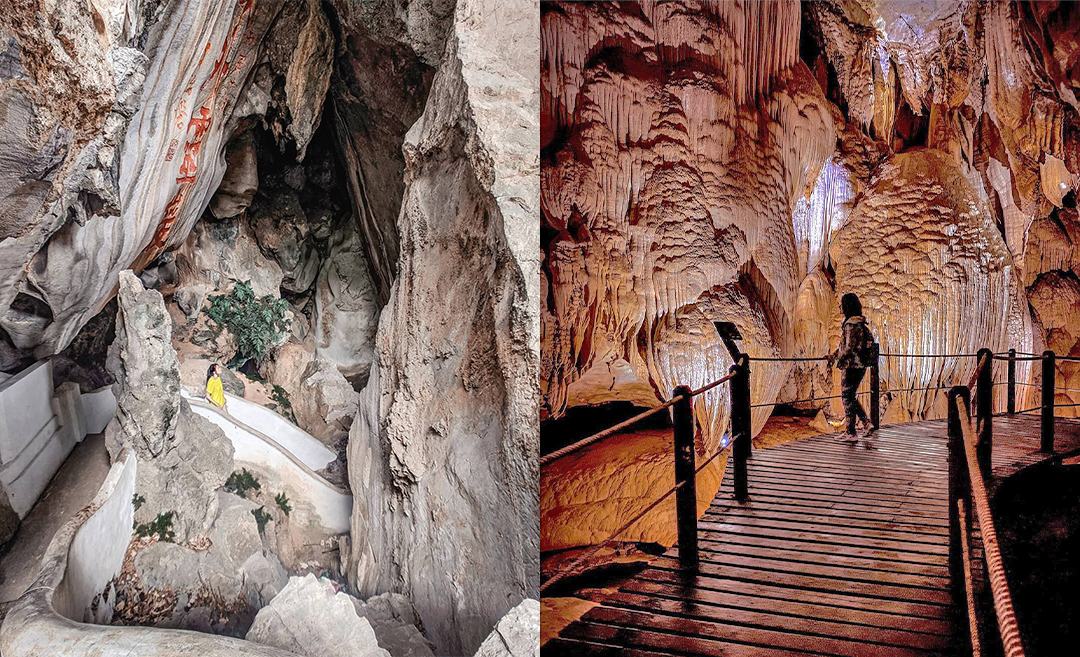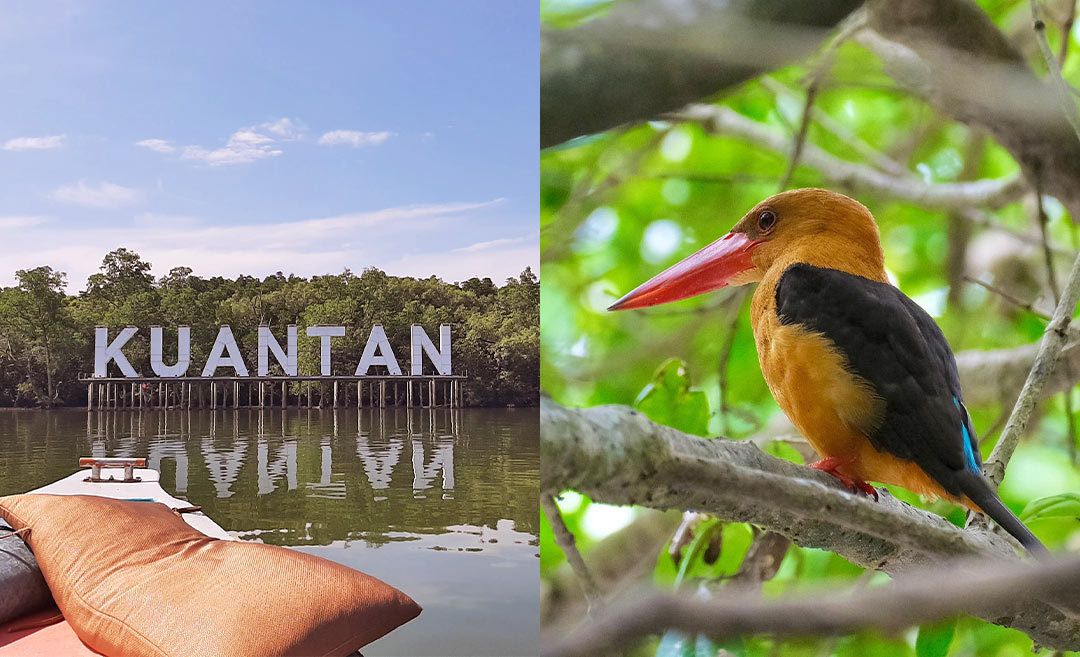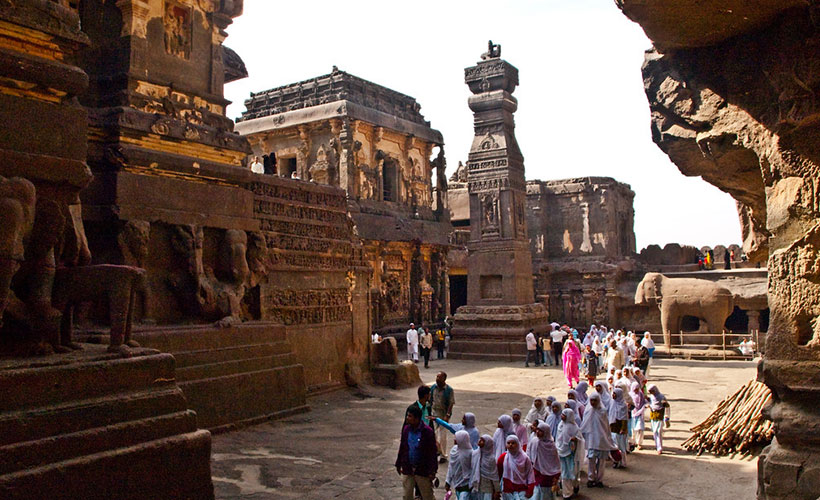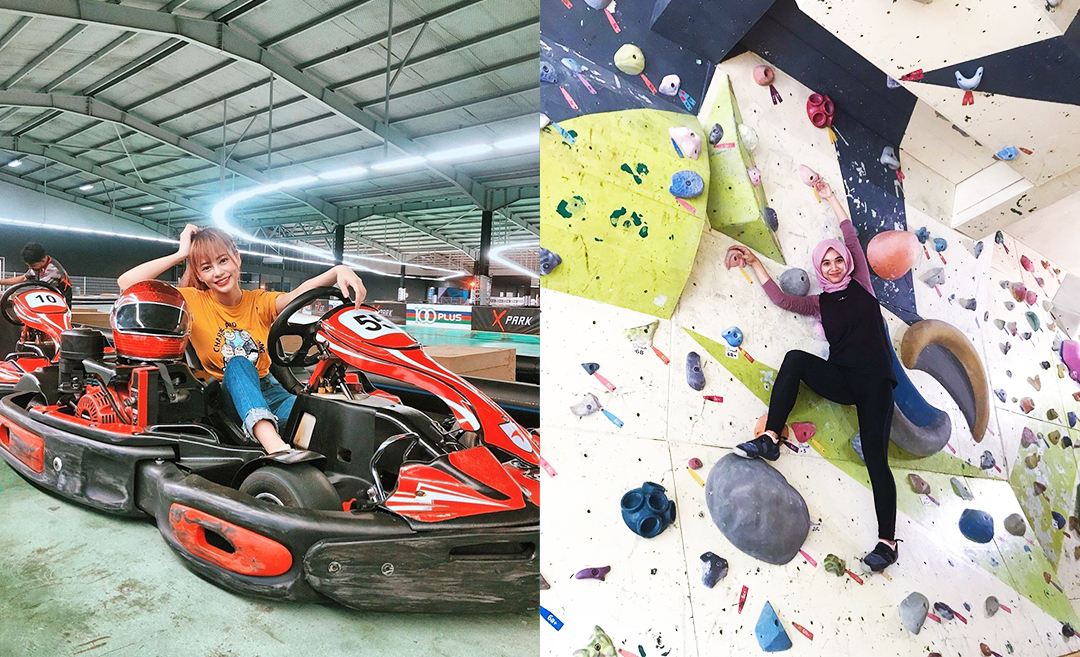There are so many fantastic cave structures and networks in Malaysia. Some house flora that can be found nowhere else in the world, while some are historical sites where remnants of its past inhabitants can still be seen! Then there are those that are now temples, while others are now attractions and conservation sites.
Whatever kind of cave you’re looking to explore, there will be something out there for you. Here’s a list that’s suitable for all levels of caving enthusiasts, from the beginner to the seasoned caver.
1. Perak Tong — Ipoh, Perak
There’s more to Ipoh than delicious food. Besides Sam Poh Tong and Kek Lok Tong, Perak Tong is also a famous and familiar name among the numerous cave temples in Ipoh. At the entrance of Perak Tong, you will be greeted by a wide stairway and a large temple gate.
Beyond the red and white gate, you will find the cave temple’s main cavern, where colourful murals of dragons and deities adorn the cave walls. If you’re feeling adventurous, there are about 450 steps that lead to the top of the limestone hill for a rewarding view of Ipoh city.
2. Gua Kelawar — Langkawi, Kedah
To reach Gua Kelawar (Bat Cave), you’ll need to take a boat. The cave is a part of the Kilim Geoforest Park and you’ll get to explore it on one of the Kilim Mangrove Tours. The boat will take you to a dock with a bridge that goes through the mangrove trees. Walk along the bridge, and you’ll find yourself at the mouth of the Bat Cave.
The cave’s name comes from the large population of Malaysian Fruit Bats that inhabit the cave. You’ll be provided with a flashlight before you enter the cave. However, you’ll be advised to keep silent and not flash the light into the eyes of the bats as not to disturb them. Admire the hundreds of bats hanging on the cave ceiling and the dramatic stalactite and stalagmite formations.
3. Gua Tempurung — Gopeng, Perak
Gua Tempurung is about 25 minutes from Kellie’s Castle by car and is popular among caving enthusiasts. At 3 kilometres long, it is one of the longest caves in Peninsular Malaysia. Comprising of five large domes, some of the ceilings resemble coconut shells, which gave it the name Tempurung — the Bahasa Malaysia word for coconut shell.
There are four different tours you can take in the cave. Tour 1 and 2 are beginner-friendly and are both dry walks along concrete pathways and steel staircases, with no guide required. Tour 1 is rated as easy, but only goes as far as Platform 3, while Tour 2 covers all five domes and is rated slightly strenuous with more steps to climb.
Tours 3 and 4 are wet tours, as participants will wade through the underground river — they are both ranger-guided tours. The best time for adventure enthusiasts interested in this would be to go early at 9am, as the last tour starts at noon for Tour 3 and 11am for Tour 4. If possible, get a group of eight to 10 adults, as that is the minimum requirement for the wet tours to run. Tour 4 includes a tour of the eastern side of the cave and vertical wall climbs.
Note that the wet tours are subject to weather conditions, and remember to bring a change of clothes and shoes. Torchlights and safety helmets are available for rent, and facilities like toilets, changing rooms, and prayer rooms are provided. Visitors with heart conditions and claustrophobia should limit themselves to Tour 1 and 2.
For more information, it is always best to call the cave administration before planning your trip.
4. Batu Caves — Gombak, Selangor
This famous cave doesn’t need much of an introduction. Batu Caves is a Hindu Temple devoted to the Lord Murugan — with a 42-metre high gold statue standing outside the cave. The main cave is accessed by a flight of 272 steps painted in bright rainbow colours, but watch out for the monkeys on your climb up! They might reach out to snatch food, water, or your mobile phone. You’ll be fine as long as you don’t feed them and keep your valuables close to you.
5. Ramayana Cave — Batu Caves, Selangor
Situated in the exact location of Batu Caves, this cave is much lesser-known but is also well worth the visit! The Ramayana Cave pays homage to the Hindu monkey deity, Hanuman. There is a 15-metre-tall Hanuman statue and a Hanuman Temple on the way to the Ramayana Cave.
There is an entrance fee of RM5 to explore the cave, but it’s well worth it as the interior is decorated with statues and scenes depicting the life story of Lord Rama. The colourful lights and models make it a magical experience.
6. Gunung Mulu National Park — Miri, Sarawak
The Gunung Mulu National Park is a UNESCO World Heritage Site with lots of activities for the nature and adventure enthusiast. There are show caves to explore and plenty of things to see and do — you might need a week or so to experience it all. Take note that this remote wilderness can only be reached by flight, which Maswings services. The flights are from three locations in East Malaysia — Miri, Kuching, and Kota Kinabalu. However, you’ll have to keep a flexible itinerary as heavy rainfall may result in flight cancellations.
For beginners, the show caves tours are Deer & Lang, Clearwater & Winds, and Fastlane. The Deer and Lang tour takes you on an easy walk to the bat observatory. See the bats, large limestone passages, an ancient riverbed, and how the force of water carved the scalloped walls. Along the way to the Lang Cave, you’ll see unique showerhead formations at the Adam and Eve showers spouting water columns 30 metres onto the riverbed below. See the webs of worm larvae and the bat exodus, which should start around 5pm. The entire tour is RM35 and takes about three hours, plus extra time to watch the bat exodus.
The Clearwater and Winds tour takes you on a longboat to see a Penan longhouse and market before stopping at the Cave of the Winds, where you walk along a long ramp and some stairs. The third stop brings you to Clearwater, one of the biggest cave systems in the world, measuring 220 kilometres in length. See the Monophilia Pendula (One-Leaf-Plant) that can only be found in Mulu! This four-hour tour is RM67, including the longboat ride and a guide.
The shorter tour of the lot, called Fastlane, starts with a boat ride, a 10- to 20-minute walk through the rainforest, and a climb up the steps to the cave entrance. Your underground adventure then starts, where you are encouraged to discover for yourself the cave fauna — spiders, racer snakes, white crabs, and cave crickets. As the cavern opens up, some of the best cave formations can be seen highlighted by lighting. This cave is well known among scientists as it has a lot of prehistoric sediments and a volcanic ash layer. The tour is two and half hours, and the fee is RM65, including a guide and boat.
7. Niah National Park — Miri, Sarawak
Niah National Park has historical significance for being a major centre for human settlement 40,000 years ago. Human remains, wall paintings, and coffins have been found here and transported to the Sarawak Museum. There are a few caves at the Niah National Park, and they are accessed by plank walks through the rainforest. Admire the beautiful flora and fauna as you stroll along the path.
The first ‘cave’ you will see is an extended rock overhang called Trader’s Cave. In the past, birds’ nests and guano traders used to conduct business here, hence the name. A few minutes’ walk further, and you’ll find yourself at the West Mouth of the Great Cave. At over 60 metres high and 250 metres wide, this cave entrance is so grand, and the view over the surrounding rainforest with its rock formations dramatically affects photos. You can see the archaeological excavations on the left of the cave mouth.
Towards the back of the Great Cave, a passage leads to a large chamber where shafts of sunlight stream down from large holes in the cave’s roof. After that opening, you’ll enter a dark passage known as Moon Cave, where you can admire the amazing rock shapes using a torchlight.
After the Moon Cave, a short pathway leads you through the forest to the Painted Cave. This is where you can find the famous historic Niah cave paintings and fenced-off burial sites. The peaceful and relaxing atmosphere here is probably why Niah’s earlier inhabitants thought it suitable as a final resting place for their loved ones.
8. Taman Rekreasi Gua Kelam — Kaki Bukit, Perlis
‘Kelam’ means dark, and Gua Kelam was named by the old tin miners who used carbide lamps to light up the cave interiors. Today, as an attraction, plank walks and cement walks make it easier to tour the cave. You will be able to see the old tin mining trolley tracks built from wood and steel. Besides admiring the limestone cave interior, Gua Kelam is only a few kilometres from Thailand’s border, and you can hop on over there by crossing a suspension bridge.




